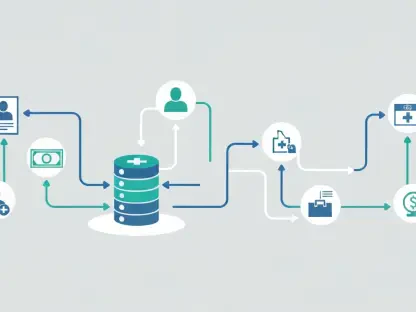Blockchain technology has long promised to revolutionize the digital world by allowing users to take control of their digital experiences, free from centralized authority. However, achieving this goal has proven difficult due to issues like unpredictable fees, sluggish transaction times, and fragmented ecosystems. The concept of a fully realized blockchain-based digital future has been hampered by these technical limitations. While numerous solutions such as Layer 2s and rollups have been proposed to improve scalability, they often add complexity and fail to fully address the so-called blockchain trilemma—balancing scalability, security, and decentralization.
The Advantages of Polkadot 2.0
Agile Coretime’s Dynamic Resource Allocation
Polkadot 2.0 introduces a groundbreaking approach to scalability by embedding it into the network’s very architecture. At the heart of this innovation is Agile Coretime, a feature designed to offer dynamic resource allocation and seamless interoperability between different blockchains. Agile Coretime overcomes the siloed nature of existing blockchain systems, ensuring that resources can be allocated dynamically based on real-time demands. This adaptability leads to faster transaction speeds and predictable fees, making the performance of the network robust even during peak times. This approach differs from previous attempts at scalability, offering a stronger and more integrated solution.
For instance, with Agile Coretime, decentralized finance (DeFi) platforms can maintain high performance even during surges in trading activity. Gaming ecosystems can facilitate complex asset transfers without experiencing slowdowns, and NFT marketplaces can scale effortlessly to accommodate a growing user base. These improvements make it easier for developers to create innovative applications without being bogged down by financial and technical limitations. As a result, Polkadot 2.0’s integrated scalability approach is expected to be a significant game-changer in the blockchain industry.
Native Interoperability Between Blockchains
In addition to resource allocation, Agile Coretime also emphasizes native interoperability between blockchains, a feature critical in overcoming the fragmentation that has plagued blockchain ecosystems for years. This kind of interoperability ensures that different blockchains can communicate and interact seamlessly with one another. This development is crucial for both end-users and developers as it unifies disparate blockchain networks into a cohesive system. End-users benefit from a smoother, more integrated experience, while developers can take advantage of a broader range of tools and functionalities without dealing with compatibility issues.
Furthermore, this native interoperability opens up new possibilities for cross-chain applications, where solutions can leverage the strengths of multiple blockchains to deliver superior performance and functionality. For example, a financial application could use the speed of one blockchain for transactions while relying on the security features of another, thereby offering a more comprehensive service. This kind of synergy was difficult to achieve with previous blockchain technologies due to their isolated nature, but Polkadot 2.0 makes it a reality.
Industry Impact and Future Prospects
Polkadot 2.0 Across Various Sectors
The implications of Polkadot 2.0’s technological advancements extend across numerous industries. In the realm of decentralized finance (DeFi), the enhanced scalability and predictability of transaction fees ensure that platforms can handle heavy trading volumes without compromising performance. This is particularly vital during periods of market volatility when transaction surges can overwhelm existing systems. For the gaming industry, Polkadot 2.0 enables the seamless transfer of in-game assets, making for a more enjoyable and less frustrating experience for players. NFT marketplaces also stand to benefit from the ability to scale effectively as user interest and participation grow.
Beyond these particular sectors, social platforms built on blockchain technology could see significant improvements in user experience and scalability. This evolution allows for greater user engagement and interaction without the fear of network congestion or exorbitant costs. Ultimately, developers in these industries face fewer barriers to entry, enabling innovation to flourish and fueling organic growth within the blockchain ecosystem. These changes signify a substantial shift from the initial constraints that held back blockchain technology’s full potential.
Support for Newcomers and Seasoned Developers
Blockchain technology has been heralded as the key to revolutionizing the digital realm by empowering users to manage their digital experiences without the need for centralized authorities. Despite its promise, the journey to this ideal has been fraught with challenges. Issues such as unpredictable fees, slow transaction speeds, and fragmented ecosystems have consistently prevented a fully realized blockchain-based digital future. These technical hurdles have put a damper on the potential of blockchain tech. Various solutions, including Layer 2s and rollups, have been proposed to address these limitations and enhance scalability. However, these solutions often introduce additional complexity and still don’t fully resolve the blockchain trilemma, which involves balancing scalability, security, and decentralization. This trilemma remains a significant hurdle, complicating the path to widespread blockchain adoption. The ultimate goal is to find a way to achieve all three aspects harmoniously in a manner that doesn’t sacrifice one for the others, ensuring a more seamless and trusted digital ecosystem.









